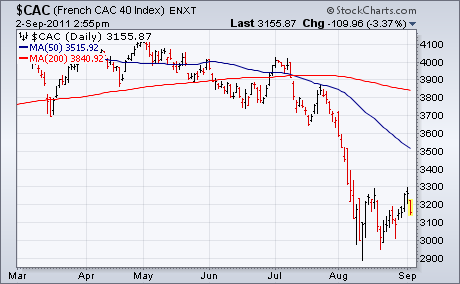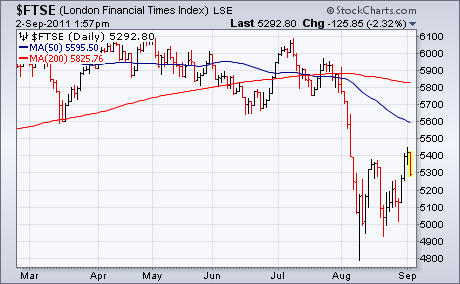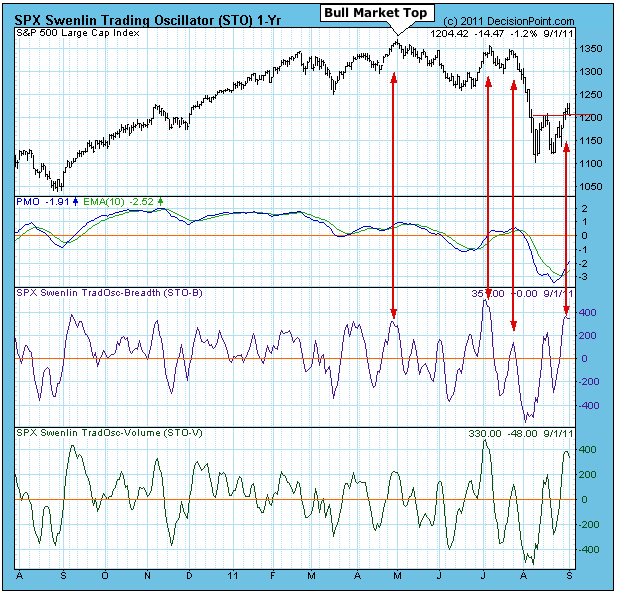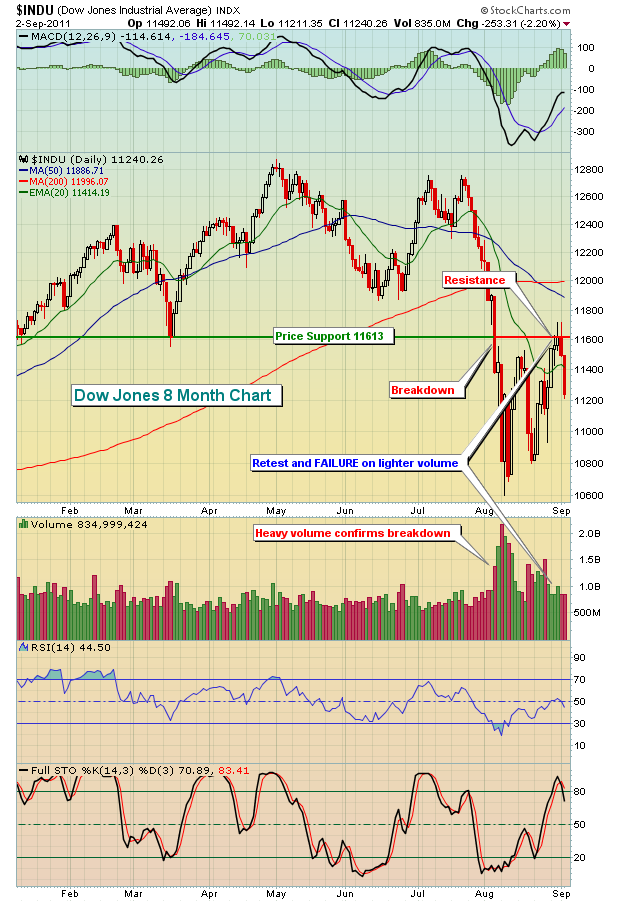Hello Fellow ChartWatchers!
Last month, we announced the opening of a new User-to-User help website called "s.c.a.n." - the StockCharts Answer Network. Hopefully, you've had a chance to check it out - if not, I strongly encourage you to do so.
s.c.a.n. has been a huge success so far. Almost 150 different questions have been asked and over 360 different answers have been given - as you can see, the s.c.a.n. community is ANXIOUS to help!
Remember, anyone can browse s.c.a.n. for free just by visiting the s.c.a.n. website. Here's just a sample of some of the great things you can find over there right now:
- Six great ways to import a list of ticker symbols into StockCharts from some other website.
- How to discover the indicator settings for ANY SharpChart, even if they aren't displayed on the chart.
- Several great local Technical Analysis user groups.
- Why and how to set Stops accurately in your trading.
- Which web browsers people use with StockCharts and why.
- How to shade the area between the Bollinger Bands with a translucent color.
- How to chart the percentage a stock is above or below a moving average.
- ...and much, much more.
s.c.a.n. is free, useful, rewarding and full of great advice from other StockCharts users. You owe it to yourself to take some time over the holiday weekend and look at all of the content there. Hopefully you will also decide to join in by asking the s.c.a.n. community a StockCharts question that has been bugging you forever!
Happy Labor Day! (US markets closed on Monday.)
- Chip
EUROPEAN STOCKS FALL ... This morning's weak employment report is having a negative impact on global stock markets. European stocks are down 3%. Chart 1 shows the German DAXto be the weakest of the three after having achieved a feeble rally over the last month. Chart 2 shows the French CAC Index failing at 3300 resistance. Chart 3 shows the London Times Index (FTSE) falling back below its mid-August peak at 5377. All three charts strongly suggest that the short-term rally in Europe has probably ended.



Have a great Labor Day weekend!
- John
Reminder: StockCharts now provides real-time charts for FTSE and Euronext stocks and indexes as well as delayed data for the DAX. Click here for more information.
The Euro Currency Trust (FXE) opened strong on Monday, but moved lower throughout the week and closed near its low for forge an outside reversal. An outside reversal occurs when the high is above the prior high and the low is below the prior low. A close below the prior open reinforces the reversal. While the overall trend remains up, chartists should watch support from the May-July lows for a potential trend reversal. The chart below shows FXE forming a big outside reversal in early May and then stalling the next 3-4 months. The May-July lows mark support at 139. A move below these levels would forge lower lows and break the June 2010 trendline. This would clearly reverse the uptrend.

Click this image for a live chart.
The indicator window shows StochRSI with horizontal lines set at .40 and .60. Instead of using crosses above the midpoint (.50) to generate signals, I applied at .10 buffer to bullish and bearish signals. A move above .60 is momentum bullish until there is a counter move below .40. A move below .40 is momentum bearish until there is a counter move above .60. Notice how StochRSI moved below .40 in early May and has yet to produce a counter signal. This indicator is in bear mode until a break above .60. You can read more about StochRSI in our ChartSchool.
It is a concept that we stress on a periodic basis, and we got another illustration this week. Technical indicators must be interpreted within the context of the overall market trend.
On August 17 the S&P 500 Index 50-EMA crossed down through the 200-EMA, declairing by our definition that the long-term trend was down and that we were in a bear market. When this happens, we remind ourselves that "bear market rules apply," and that we should expect negative outcomes more often than positive ones.
As of yesterday many of our short-term indicators were overbought and topping -- the chart below shows what the STO-B and STO-V looked like yesterday. And even though prices had broken above the previous August top, we expressed doubts about the viability of the rally in our daily blog because internals were negative.

While we just recently had technical confirmation that we are in a bear market, the bear has actually been around since the May 2 top, and the coincidence of price and indicator tops was an early clue that the up trend had stalled and may have been in trouble. Since the price break in August we need to consider overbought indicator tops as being cracks in thin ice.
- Carl
Wednesday at noon, the Dow Jones and NASDAQ were both testing critical resistance. Here's an excerpt from my daily Market Chatter mailed out close to noon EST on Wednesday:
"We certainly don't like the action thus far today. A rather significant reversal is possibly underway at major price resistance. The NASDAQ is showing a shooting star doji with the upper tail just beyond the 2600-2608 price resistance we've discussed. The earlier high was 2611 with the NASDAQ at 2584 at last check. A finish there today would be bearish short-term.
The Dow Jones is also testing very signficant price resistance at 11613. It failed on yesterday's close, then was well above that resistance earlier today at 11713 before tumbling over the past hour or so back near the 11613 level. Again, a finish beneath 11613 with a long tail above it would not be a good sign for the bulls in the near-term.
Those who favor the short side have a great opportunity to jump in on shorts with much lesser risk than we've seen over the past couple weeks. That's what a light volume rally will do."
Take a look at the two charts below and then I'll discuss some of the comments above:


The NASDAQ lost critical neckline support in early August on massive volume. Yes, the bounce was nice. But we cannot assume that a critical resistance level like 2608 will be cleared. We have to SEE it first. The assumption is that it will fail until proven otherwise. Note the declining volume on both of these charts as prices moved higher to test resistance. Volume trends are horrible. It felt as though the market was being manipulated this past week. On Tuesday, consumer confidence fell from 59.2 to 44.5, one of the largest month-to-month declines I've seen. Yet the market's bounce continued almost unabated. Then on Wednesday, the bulls had their big chance. While the ADP employment change report missed estimates slightly, both Chicago PMI and factory orders absolutely blew past estimates. An intraday breakout resulted, but could not be sustained. Again, volume was light on the buying. On Thursday, the ISM index stayed above 50, beating consensus estimates (48.5). Once again, the market exploded higher intraday, moving past resistance only to fail into the close again. Volume remained light.
On Wednesday, the Dow Jones even managed to close EXACTLY at 11613. It wasn't 11614 or 11615. It was EXACTLY on resistance at 11613. We're left scratching our heads when the close occurs right on the biggest price resistance level on the chart. Thursday and Friday belonged to the bears, especially Friday after a dismal jobs report. Now the bulls can only tip their caps to the bears. The bears did at resistance what the bulls did at support - in tennis terms, they held serve. The problem for the bulls is that we're in a confirmed downtrend with very negative volume trends. Daily MACDs remain well below the centerline. That tells us that momentum remains bearish. It also suggests that the current range that we're in is most likely to break to the downside, in the direction of the prior downtrend.
It's going to be extremely important to follow the "beneath the surface" signals and sentiment. The S&P 500 topped when signals alerted me to the fact that the upside move was not sustainable. We're likely to see reversing signals ahead of time to the downside as well.
Happy trading!
- Tom